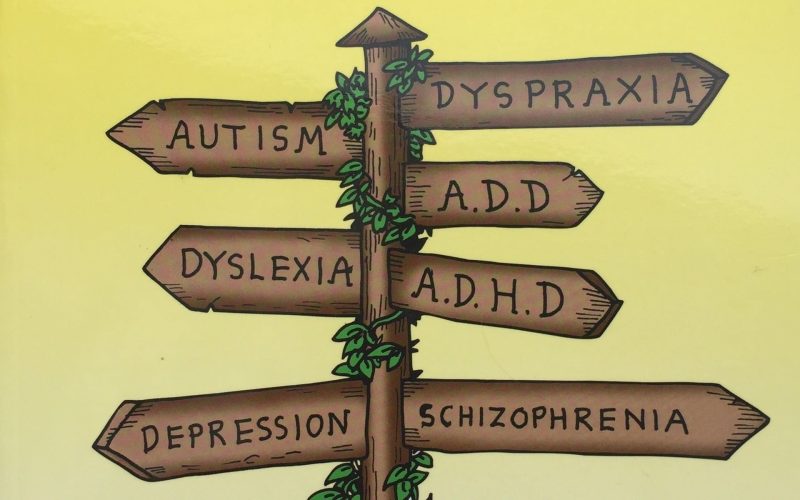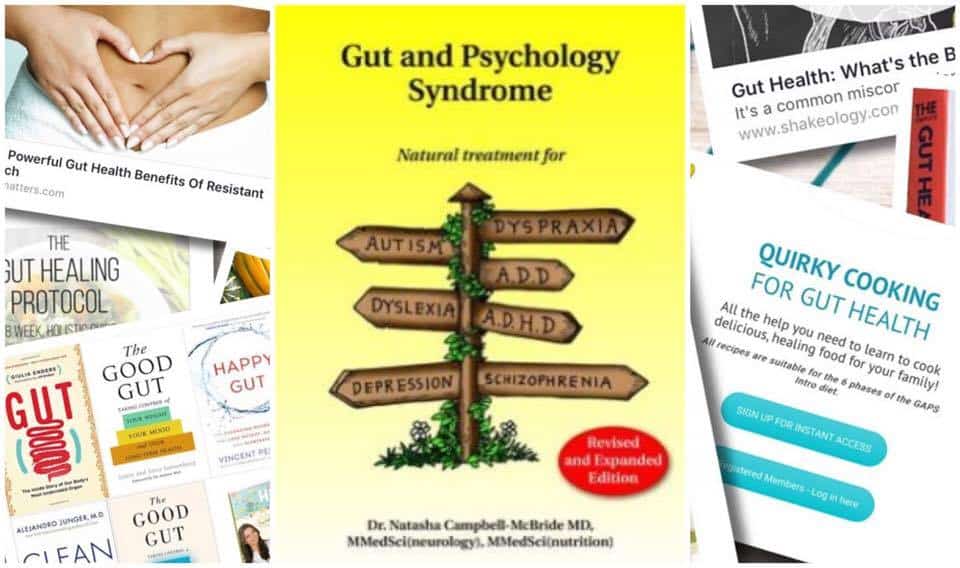When most people hear about diets, the first thing that comes to mind is weight loss, but the GAPS diet is not one for weight loss.
The GAPS diet is unique in that followers must avoid grains, starchy vegetables, refined carbs, and pasteurized dairy.
The GAPS diet has been promoted as a completely natural treatment for individuals who have conditions that affect the brain, like autism.
However, the GAPS diet is a controversial therapy and has been greatly criticized by scientists, doctors, and nutrition professionals for its very restrictive regimen.
This article discusses the features of the GAPS dietary protocol and discusses any possible proof of its purported health benefits.
What Is the GAPS Diet and Who Is It For?
GAPS is an acronym for Gut and Psychology Syndrome. Dr. Natasha Campbell-McBride created the term and designed the GAPS diet.
Dr Natasha’s theory is that many health conditions that affect the brain result from a leaky gut. A leaky gut syndrome is a term for a rise in the permeability of the gut wall.
The GAPS theory suggests that a leaky gut allows bacteria and chemicals from the food you eat and your environment to enter your bloodstream when they would not normally do so.
The diet claims that when these foreign substances gain access to your blood, they can affect the functioning of your brain and also its development, leading to “brain fog” and serious conditions like autism.
The GAPS protocol was created specifically to heal the gut, lower “toxicity” in the body, and prevent toxins from entering the bloodstream.
However, it remains unclear whether or how exactly a leaky gut contributes to the development of any disease.
In Dr Campbell-McBride’s book, she says that the GAPS dietary protocol is what worked to cure her first kid of autism.
She has since widely promoted the GAPS diet as a natural solution for many neurological and psychiatric conditions, such as;
- ADD and ADHD
- Autism
- Dyslexia
- Bipolar disorder
- Dyspraxia
- Depression
- Schizophrenia
- Tourette’s syndrome
- Gout
- Eating disorders
- Obsessive-compulsive disorder (OCD)
- Childhood bed wetting
The GAPS diet is most often used for kids, especially children who are dealing with a medical condition that is poorly known or understood by mainstream medicine, like autism.
The GAPS diet has also been claimed to be helpful to children who are intolerant to a specific food or have allergies.
The GAPS diet isn’t for a very short period. It can be a years-long process that requires you to completely avoid all foods that Dr. Campbell-McBride thinks will worsen or contribute to a leaky gut.
These foods include pasteurized dairy, all grains, refined carbs, and starchy vegetables.
The GAPS diet protocol has three primary stages: the GAPS introduction diet stage, the full GAPS diet stage, and finally, a reintroduction stage for those who wish to discontinue the GAPS diet.
1. Introduction Phase: Elimination
The introduction phase is the first and most intense part of the GAPS diet because it is the phase where most foods are eliminated.
It is also known as the “gut healing phase” and this phase can last from a short as three weeks to as long as one year, it all boils down to your symptoms.
This elimination phase is broken down into six different stages;
Stage 1
This stage requires you to eat homemade bone broth, drink chamomile or mint tea with honey between every meal, and drink juices from probiotic foods and ginger.
Non-lactose-intolerant individuals may eat homemade, unpasteurized yogurt or kefir.
Stage 2
You can add ghee, raw organic egg yolks, stews made with meat or fish, and vegetables by the second stage.
Stage 3
Eat all previous foods in stages 1 and 2, including avocado, GAPS-recipe pancakes, fermented vegetables, and scrambled eggs made with duck fat, ghee, or goose fat.
Stage 4
Add roasted and grilled meats, vegetable juice, cold-pressed olive oil, and GAPS-recipe bread.
Stage 5
By the fifth stage, you can introduce fruit juice, cooked apple purée, raw vegetables starting with peeled cucumber and lettuce, and a tiny amount of raw fruit, excluding citrus.
Stage 6
Finally, you can introduce more raw fruit to your diet, including citrus.
During this introduction phase, the GAPS diet requires slowly introducing foods, beginning with small amounts and gradually building up.
The GAPS diet recommends gradually moving from one stage to the next once you notice that your body tolerates the foods you have introduced.
Your body is considered to be tolerating food only when you have an easy and normal bowel movement.
Once you have completed the introduction diet, you can move on to the full GAPS diet.
2. Maintenance Phase: The Full GAPS Diet
This is the second phase, called the full GAPS diet, and it can last between 1½ and 2 years.
During this phase of the GAPS diet, Individuals are advised to base most of their diet on the foods below;
- Fish
- Fresh meat, preferably grass-fed and hormone-free
- Organic eggs
- Animal fats, such as lard, tallow, lamb fat, duck fat, raw butter, and ghee
- Shellfish
- Vegetables
- Fermented foods, such as homemade yogurt, kefir, and sauerkraut
Followers of the GAPS diet can also feed on moderate amounts of different nuts and GAPS-recipe baked goods with nut flours.
There are also a wide number of extra diet recommendations that go together with the full GAPS diet. These recommendations include;
- Do not eat fruit and meat together.
- Use only organic foods at all times or whenever possible.
- Eat organic animal fats and cold-pressed olive or coconut oil at every meal.
- Consume home-cooked bone broth with every meal.
- Consume large quantities of fermented foods if your body tolerates them.
- Avoid canned and packaged foods.
During this second phase of the GAPS diet, you must avoid all other foods, especially refined carbs, artificial colors, and preservatives.
3. Reintroduction Phase: Coming off GAPS
This is the third phase, and the last, if you’ve decided to follow the GAPS diet to the letter.
If you want to follow this diet to the letter, you’ll have to be on the full diet for at least 1½ to 2 years before you begin reintroducing new foods.
The GAPS diet requires that you move on to the reintroduction phase after you have first experienced normal food digestion and normal bowel movements for a minimum of six months.
Like the other two stages of the gaps diet, the last stage can also be very long as you slowly try to reintroduce foods over a couple of months.
The GAPS diet suggests individually introducing each food in very small amounts. If you do not record any digestive problems over 2–3 days, you may slowly increase your food portions.
The diet does not detail how to introduce the food or the foods you need.
However, it states that you must begin with fermented, gluten-free grains and new potatoes.
Even when you go off the GAPS diet, you’re advised to avoid highly processed and refined high-sugar foods and to retain the principle of whole foods that the diet preaches.
GAPS Supplements
The founder of the GAPS diet states that the diet itself is the most vital aspect of the GAPS protocol.
Nevertheless, in addition to the highly restrictive diet, the GAPS protocol also recommends different supplements. These supplements include essential fatty acids, probiotics, cod liver oil, and digestive enzymes.
Probiotics
Probiotic supplements are also included in the GAPS diet to help users maintain the balance of beneficial or good bacteria in their gut.
It is also recommended that you choose a probiotic that contains strains from a wide range of bacteria, such as Bifidobacteria, Lactobacilli, and Bacillus subtilis varieties.
You are also advised to search for a product or supplement that contains a minimum of 8 billion bacterial cells per gram and to introduce probiotics slowly into your diet.
Cod Liver Oil and Essential Fatty Acids
People on the GAPS diet are also advised to take supplements of cod liver oil and fish oil to ensure they are getting the right amount.
The GAPS diet also suggests consuming small amounts of seed oil blend and a cold-pressed nut with a 2:1 ratio of omega-3 to omega-6 fatty acids.
Digestive Enzymes
Another claim that the diet’s founder made is that people who have GAPS conditions also usually have very low stomach acid production.
To fix this, she suggests that people who follow the diet take a supplement of betaine HCl with some added pepsin before every meal.
This betaine HCl supplement is a manufactured type of hydrochloric acid, which is one of the main acids produced in your stomach.
Pepsin is an enzyme also produced in the stomach, and it works to break down and digest proteins.
Some individuals may also want extra digestive enzymes to aid food digestion.
Does the GAPS Diet Work?
The GAPS dietary protocol has two primary components: dietary supplements and an elimination diet.
The Elimination Diet
At present, no research has examined the effects that the elimination diet of the GAPS dietary protocol has on the behaviors and symptoms associated with autism.
For this reason, it is impossible to know how the diet could help individuals with autism and whether the diet is an effective treatment.
Some other diet options that have been tested in individuals with autism, such as ketogenic diets and casein-free, gluten-free diets, have shown potential for helping to improve some of the characteristics linked with autism.
But so far, research on the subject has been small and with very high drop-out rates, so it remains unclear how the diets may work and who they may help.
No other research has examined the effect that the GAPS diet may have on any of the other conditions that it has been claimed to treat.
Dietary Supplements
As mentioned earlier, the GAPS diet prescribes probiotics to help restore the balance of beneficial bacteria in the gut.
Even though the impact that probiotics have on the gut is quite a promising line of research, at present, there is little evidence of this aspect as it relates to autism and other neurological conditions that the GAPS diet has been claimed to treat.
More high-quality research is needed before researchers can confirm whether or not bacterial strains play a role in the development of autism and, if indeed there’s hope, who might benefit from probiotics.
Aside from probiotics, the GAPS diet also suggests taking supplements of digestive enzymes and essential fats.
However, studies to present have not been able to observe that taking any essential fatty acid supplements has any form of effect on individuals with autism. Also, research on the effects of digestive enzymes on autism has only produced mixed outcomes.
Overall, it is still unclear whether taking dietary supplements will improve autistic behaviors or nutrition status. More high-quality studies are needed before the effects can be identified.
Does the GAPS Diet Have Any Risks?
First, you must note that the GAPS diet is a restrictive protocol that requires you to avoid many highly nutritious foods for a very long time.
This diet also provides little or no guidance on how to ensure that one’s diet contains all the essential nutrients one’s body needs.
Because of the above, the most obvious risk of following the GAPS diet is malnutrition. This risk is especially true for children who are fast-growing and require a lot of nutrients because this diet is too restrictive.
Additionally, people with autism may already be living on a restrictive diet and may also not readily accept any changes in their diet or the introduction of new foods. Making these people follow the GAPS diet could lead to extreme restrictions.
Some of the critics of the GAPS diet have voiced their concern that eating large amounts of bone broth may increase your intake of lead, and lead is very toxic in high doses.
However, at present, the risks of lead toxicity for people on the GAPS diet is yet to be documented, so for now, the actual risk is yet to be known.
Does Leaky Gut Cause Autism?
Most of the people who have tried the GAPS diet so far are children with autism who have parents who are constantly looking to cure or improve their condition.
The reason for this demographic is that one of the primary claims made by the founder of the diet is that a leaky gut causes autism, and to cure or improve it naturally, you have to follow the GAPS diet.
Autism is a condition that causes changes to the brain function that also affect how an autistic person experiences the world around them. The effects of autism can vary widely, but generally, individuals with autism find it hard to communicate and enjoy social interaction.
It is a very complex condition that stems from environmental and genetic factors.
Interestingly, researchers have pointed out that up to 70% of individuals who have autism also suffer from poor digestive health, which can lead to symptoms such as constipation, abdominal pain, diarrhea, acid reflux, and vomiting.
Untreated digestive symptoms in individuals who have autism have also been connected with some more severe behaviors, such as increased irritability, aggressive behavior, tantrums, and sleep disturbances.
A small number of studies have revealed that some kid who has autism have increased intestinal permeability.
However, the outcomes are mixed, and other researchers have found no significant difference between the intestinal permeability in children with and without autism.
Also, there are currently no studies that point to the presence of a leaky gut before autism development.
So even if it is true that leaky gut is linked to autism in some kids, it’s not confirmed if it’s either a cause or a symptom.
Above all, the claim by the founder of the diet that a leaky gut is the cause of autism has remained very controversial.
Some scientists think that this explanation oversimplifies the causes of what is known to be a complex condition.
Moreover, the so-called leaky gut explanation is still not supported by any scientific evidence.
Should You Try the GAPS Diet?
Some people strongly believe they have greatly benefited from the GAPS diet, but all these reports are anecdotal.
Nevertheless, this elimination diet is too restrictive for long periods, making it hard to stick to.
The diet may be especially very dangerous for the exact people it is designed for — vulnerable young people.
Also, many health professionals have opposed the GAPS diet because there are still no scientific studies to back up its claims.
If you plan to try this diet, make sure to talk with your doctor first.









